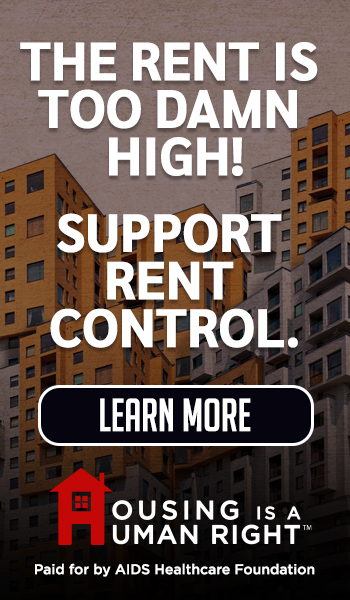Comments
THE CLEAN UP - No debris has been cleared. The EPA is only beginning the first phase of cleanup. Many fire victims are still in shock, scrambling between sleeping on friend’s couches and using the illegal bathrooms in their garages while looking for longer term, hopefully interim housing solutions.
However, the question of what comes next looms large. In the Palisades, it’s the swirl of rumors surrounding the intentions of Karen Bass’ appointed Czar of recovery, the mega developer Steve Soboroff who built the Staples Center and the Playa Vista planned community development. In a community like the Palisades where everybody seems to be well connected, and everybody knows somebody further up the influence chain who will answer the phone, the neighborhood is afire with speculation about the marriage between the uber-capitalist Soboroff and the ever more corporate entwined administration of Karen Bass.
Altadena, by comparison, seems a quaint, distant, quiet place altogether removed from thunderous jockeying for position echoing through the Palisades. But even in Altadena, the future of the community is in the initial stage of taking shape. This week, the County Board of Supervisors passed a sweeping measure, the stated intention of which, is to aid recovery efforts. However, not quite so effectively buried in the voluminous document, was one section which outlined important parameters for the community’s rebuild.
The resolution was sponsored by supervisors Lindsey Horvath and Katheryn Barger. On page 13 of the 24, the resolution calls for the 5-year suspension of a long list of state housing laws in the Altadena fire zone. To mention a few, the State’s Density Bonus Law, the 90 day approval requirement for ADU permits, SB 6 - The Middle Class Housing Act, several provisions in state law which would guarantee property owners would at least be able to replace the number of housing units they had lost to fire, and SB 9 which allows communities to add more naturally occurring affordable housing through building duplexes and allowing a lot split.
Under the terms of the resolution, property owners would be stripped of all these entitlements which had previously run with their land. And, importantly as we are talking about a fire zone and properties mostly or completely burned to the ground, these properties value at this moment is defined by the entitlements that run with the land. As the value of land is measured by its entitlements, physical size and location, Altadena fire victims will have their properties devalued commiserate with the entitlements stripped away by the supervisor’s resolution.
The right of return of Altadena residents will also be diminished by these provisions. Unlike the Palisades, Altadena is a middle-class neighborhood, exactly the type of community put at risk by the policy induced housing scarcity that has fueled gentrification and destroyed housing affordability throughout California. The supervisor’s move to strip Altadena of a whole grocery list of affordable housing measures and re-impose exclusionary single family only zoning in its most extreme form, unquestionably will supercharge gentrification and usher in the rapid transformation of Altadena from a middle-class neighborhood to one more exclusive hillside neighborhood populated overwhelmingly by the wealthiest and most advantaged Angelenos.
Altadena was built as a single-family neighborhood, but at a time when land was plentiful and cheap, and sprawl was the development engine of the day. Now that resource devouring ingle family development has literally run into the mountains in the case of Altadena, affordability hinges on the ability to modestly add dwelling units to single family lots in a manner consistent with the character of the historic built environment.
But this does not seem to be the supervisor’s priority. The goal of the supervisor’s moves is as 5th Supervisorial district communications director Helen Chavez Garcia puts it to stave off larger, more dense building to, “try and preserve the character of the community so that Altadena still looks and feels like Altadena.”
However, Abundant Housing policy director Scott Epstein offered a different perspective. “Altadena is a very middle-class neighborhood,” he said. “A lot of people are not going to be able to rebuild in exactly the same way as before and need to be able to make better use of their land to return. Eliminating all the flexibility that these affordable housing laws allow for is going to create hurdles to rebuilding.”
ADSs are a perfect example. These low-impact, affordable, market rate housing units are being built all over California by homeowners needing extra income to help pay their mortgage, provide housing for adult children unable to afford California’s inflated housing costs and provide a place in the community for elderly parents needing a little assistance with maintaining an independent lifestyle. That the supervisors would suspend the 90-day deadline for approval of ADU permits and thereby put Altadena homeowners at the mercy of building and planning department bureaucrats who are notorious for their delay, deny and defend mentality towards new housing units seems at best tone deaf, and at worst cruel.
Whether a fire victim is well insured, underinsured or not insured at all due to the recent regulatory induced spate of insurance cancellations, being able to show an income stream for a rebuild project undoubtedly makes securing financing easier. Eliminating fire victim’s right to reliably and efficiently permit ADUs undoubtedly penalizes fewer wealthy residents while tilting the scales in favor of their wealthier neighbors and property speculators with deep pockets.
The same can be said for the supervisors move to eliminate fire victim’s right to do a single property lot split as called for in low impact middle class housing bills such as SB 9. Overwhelmingly, the affordable housing bills the supervisor’s resolution would eliminate allow for modest, evolutionary changes to neighborhoods that blend into the existing fabric of the community. Unless converting a front-loaded garage, ADUs are always built towards the back of the lot and generally have little to no impact on residential streetscapes. And nothing in the bills targeted for elimination call for new massing of buildings out of scale with the existing neighborhood. In most cases, on residential streets, only 2-3 units would be allowed where formerly only one was allowed before.
Another victim in the supervisor’s eliminating of affordable housing options for Altadena residents would be the opportunity for multi-generational housing. Essentially, the supervisors’ actions would return Altadena to a time where only single unit, single family homes were allowed to be built. These are, of course, the most expensive housing option available and the most restrictive in terms of occupancy. Bigger, more expensive homes for fewer people will be a direct result of the supervisors’ actions.
The irony of all of this is that Altadena historically has had a significant percentage of middle-class black home ownership as the area was once one of the few where black citizens were not restricted from owning homes. As redlining was supplanted by downzoning in the lineage of exclusion and systemic racism, the supervisor’s move to re-restrict affordable housing options in Altadena by rolling back a whole series of progressive, inclusionary housing laws is……puzzling. And that would be putting it politely.
Possibly the fire victims most penalized by the supervisor’s actions are those who will not return. We know realistically the number of residents who will choose not to rebuild will be significant. Whether due to financial challenges, personal and emotional reasons or because they are in a place in life where the long, costly rebuilding process makes no sense, some community members will not go back. In addition to increasing the number of residents who will walk away from their community due to the obstacles the supervisors are putting in the way of rebuilding affordably, those who choose to sell their land and need to use the money they receive to finance a new life somewhere else will receive far less for their property due to the supervisor’s restrictions on the future use of those properties.
In a postcard kind of world, the future Altadena the supervisors envision may look physically like the Altadena of the past, but the community, the human beings whose interconnected lives make up the living, breathing Altadena we know today will invariably be less diverse, less middle class and more the exclusive province of the economically advantaged. To anyone with a progressive vision of California as a more inclusive, diverse, dynamic place, the supervisor’s attempt to re-engineer an exceptionally economically and demographically diverse community into something less so is sad. Inclusion, diversity and opportunity do not happen by chance. They are given a chance. It is tragically unfortunate that the residents of Altadena will be denied the opportunity to rebuild their community on their own terms. The Board of Supervisors obviously think they know better than the people of Altadena.
(Barry Cassilly is a community activist and licensed general contractor/community builder specializing in architectural, infill housing. His writings focus on governmental affairs, housing issues and California politics.)
















